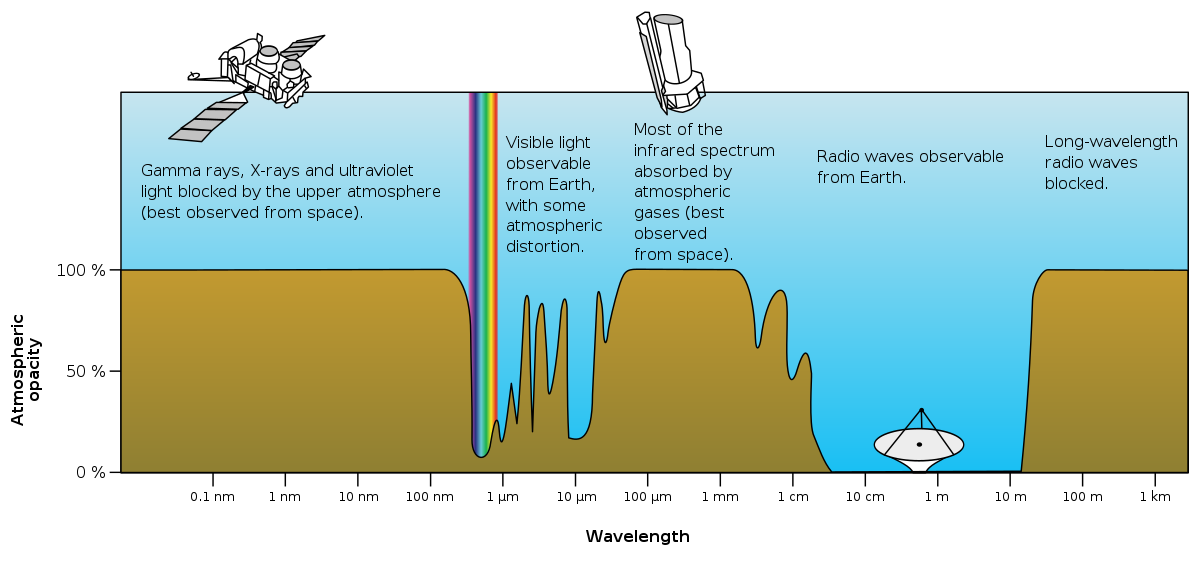As the name suggests, radio astronomy encompasses the observation of space in the area of radio waves. As you may know, our atmosphere does not only let visible light pass but also allows for a certain wavelength, namely radio waves, to enter earth. Other wavelengths such as Infrared light, ultraviolet and Gamma as well as X-Radiation are blocked by our atmosphere. For these wavelengths astronomical measurements have to be done via satellites.
Radio astronomy – What is that?
NASA (original); SVG by Mysid.
Radio waves which are measurable from earth encompass frequencies from 6 megahertz to 300 gigahertz. This wave results from an entirely different phenomenon that visible light. The radio astronomer therefore “sees” different objects than what would be observable with a regular telescope. This includes, for example, clouds of cold gas which in consolidation will eventually result in the birth of new stars. Other examples are the remains of stars that have imploded, the so-called supernovas, or far away galaxies located in the depth of the observable universe. Even the mysterious “Pulsars” are part of the observable objects of radio astronomy. These are another form of “remains of stars” which spin rapidly around their own axis and emit radio pulses whilst doing so.
This way the field of radio astronomy builds its own little world which offers, only in addition to observation made in the visible spectrum, a complete view into our universe.
Further information on the topic may be found on Wikipedia https://en.wikipedia.org/wiki/Radio_astronomy. Anyone who wants to delve deeper into the subject matter may want to check out the page of the group radio astronomy of the “Association of the Friends of the Stars” https://radioastronomie.vdsastro.de/doku.php?id=start.

